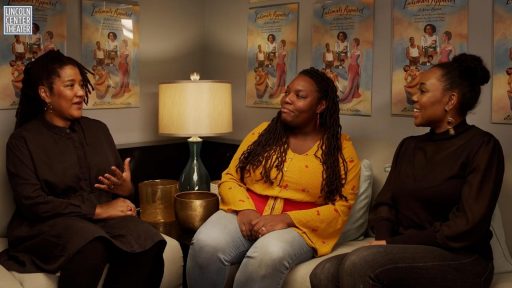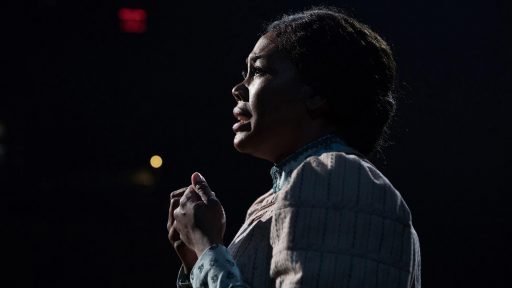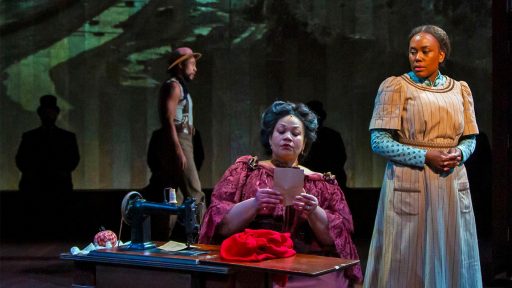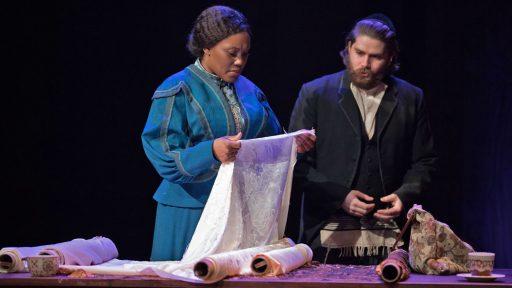By Lynn Nottage

Kearstin Piper Brown and Justin Austin in “Great Performances: Intimate Apparel.” Photo Credit: Julieta Cervantes.
Intimate Apparel began with an old photograph that I found haphazardly wedged between the pages of a Family Circle magazine. I was helping my grandmother, who’d developed debilitating senile dementia, move from her longtime home in Crown Heights, Brooklyn. In the midst of a pile of weathered magazines, I discovered a black and white passport photo of my grandmother Waple and her younger sister Eurita sitting on their mother’s lap. It was the first time I’d ever seen an image of my great-grandmother Ethel, a striking woman with high West African cheekbones and a gentle intensity. She had been a seamstress from Barbados, who at the age of 18 arrived alone in New York City at the dawn of the Twentieth Century. The image invited a thousand questions, none that could be answered by the living, and it led me on a journey to piece together the history of my great-grandmother Ethel, a woman who was basically a stranger to me. The only clue that I had about Ethel, was a story that my grandmother had once told me about her mother corresponding with a man laboring on the Panama Canal, who would eventually become her husband. I was fascinated by this story, which served as the inspiration for Intimate Apparel.
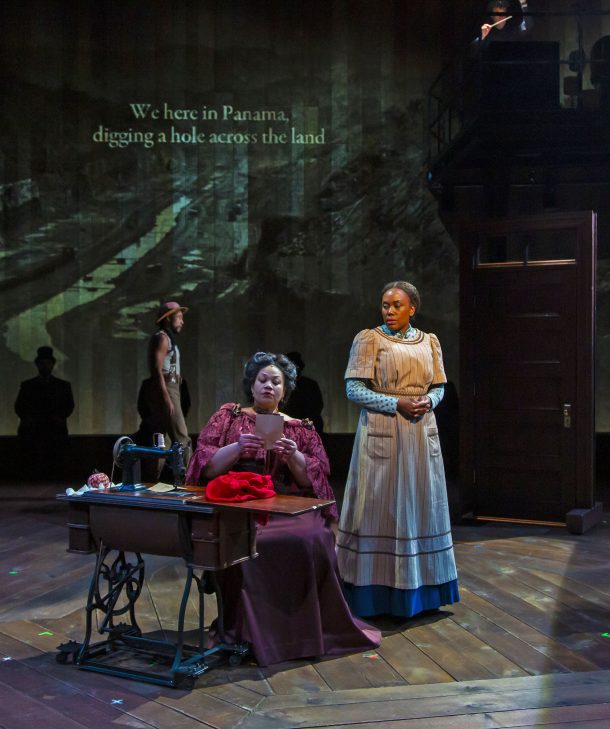
Justin Austin, Adrienne Danrich and Kearstin Piper Brown in “Great Performances: Intimate Apparel.” Photo Credit: T. Charles Erickson.
As I began my research for Intimate Apparel at the New York public library, I discovered that the lives of Black working women in the early 1900s were woefully absent from the archive. So, I found myself perusing help-wanted listings, boarding houses, and clothing advertisements, looking for any sign of women like my great-grandmother on the printed page. As I was doing so, I began to find the characters that would populate the world of Intimate Apparel; Esther the lonely seamstress, Mrs. Dickson the proprietress of the boardinghouse for Black women, Mr. Marks the Jewish fabric salesman on the Lower East Side, Mrs. Van Buren the wealthy white socialite on the Upper East Side, Mayme the sex worker in the tenderloin and George the laborer tolling on the Panama Canal. As I was conjuring the characters, I realized that I was interested in the unexpected intersections between class, race, and gender at the turn of the twentieth century, and what happens when people across cultural and economic divides are thrust into spaces of intimacy.
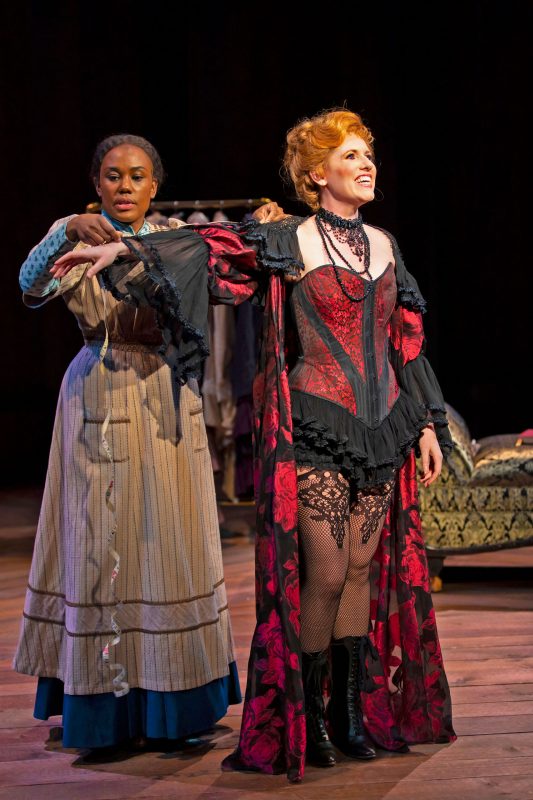
Kearstin Piper Brown and Naomi Louisa O’Connell in “Great Performances: Intimate Apparel.” Photo Credit: T. Charles Erickson.
Intimate Apparel began its life as a popular play, but it was the brilliant composer Ricky Ian Gordon who invited me to consider adapting it into an opera. He saw something epic and expansive in the life of Esther that he felt demanded to be sung, and with his loving guidance, I was able to write my first libretto. It took me several tries to figure out how to wrestle my play into a form that was new to me. As a playwright, I kept wanting to maintain absolute control of the narrative. But, it was Ricky’s words that freed me creatively to find my way into the libretto. He said, “You’re not trusting my music as a narrative tool, I can say ‘I love you’ without any words, with just music. So, allow me to be your collaborator on the storytelling.” And once he said that, we found Intimate Apparel the opera together.

